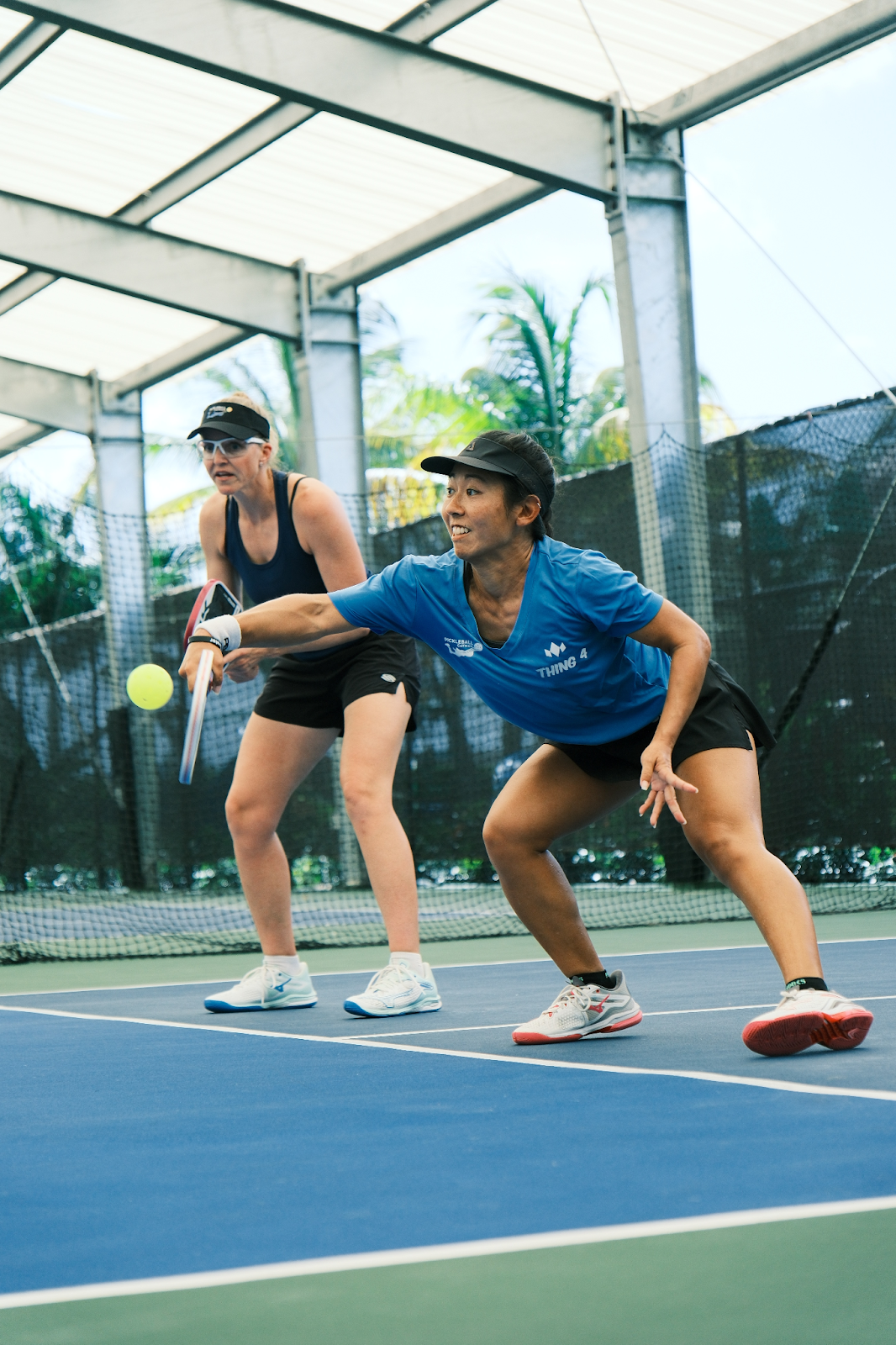How to Hit a Flick in Pickleball
.jpg)
You’ve been dinking back and forth, patiently waiting for the perfect ball. Then boom.. you flick it past your opponent before they even know what hit them. That’s the magic of the flick shot in pickleball.
It’s fast.
It’s sneaky.
And when you hit it right, it can completely flip a rally in your favor.
Whether you’re chasing a higher DUPR rating or just want to add some spice to your game, the flick is one of those “must-have” shots for competitive and rec play alike.
Let’s break it down.
What’s a Flick in Pickleball?
Think of a flick as a surprise attack from right up at the kitchen line. You’re in a soft dink rally, looking all calm and controlled… then suddenly, with a quick low-to-high wrist snap, you send the ball speeding past your opponent.
It works because they’re expecting another soft shot, not a sudden burst of pace. Even better, you can use it to attack balls below net height (something most players won’t see coming).

When to Use the Flick Shot
The flick isn’t something you blast out every other ball. It works best when it’s unexpected. Here’s when to pull it out:
- You’re locked in a slow dink rally at the net and want to change gears.
- Your opponent is creeping in and getting a little too comfortable.
- You see an open space and want to catch them flat-footed.
Pro tip: The more patient you are before you flick, the more likely you are to land the point.
How to Hit a Flick in Pickleball - Tips by Pro Player Bobbi Oshiro
1. Start in a strong, balanced stance
Stay low, knees bent, paddle out front, feet wide. This keeps you ready for anything, flick or dink.
2. Use a continental grip
Same grip you’d use for a backhand; it keeps your shot looking identical to a dink until the last second.
3. Go low-to-high
Keep your paddle down, elbow up, and lift through the ball. This motion sets up your speed and spin.
4. Snap the wrist at the last moment
This is the secret sauce. That quick snap is what makes the ball jump off your paddle faster than your opponent expects. Think of the motion as throwing a frisbee.

Common Flick Fails (and How to Avoid Them)
- Bad timing: Don’t flick every ball. Wait for one that’s attackable and when you’ve got space to hit into.
- Too much heat : Yes, it’s tempting to rip it, but if you overhit, you’ll send it long or straight into the net.
- Kitchen foot faults: No volleying stepping into the kitchen. Rules are rules.
- Too much follow-through or overextending after the shot: Players tend to follow through too much after hitting the shot. Keep the swing quick and short so you are ready for the counter by your opponents.
Think you know the pickleball rules? Read this article and see if you’re one of the 90% of players getting these wrong.
Why You Should Add It to Your Game
The flick isn’t just a “cool trick shot.” It’s a legit strategy tool that:
- Forces errors from your opponents.
- Makes you unpredictable in dink rallies.
- Helps you take control of a point on your terms.
- Takes time away from your opponents by hitting the ball early and out of the air.
So whether you’re grinding for a higher pickleball rating, chasing your next tournament win, or just looking to dominate those tight net battles, the flick is worth the reps.
Next time you’re on the court, set up some dink rallies with a buddy and practice sneaking in that flick. Use it sparingly, disguise it well, and watch your opponents start questioning every shot you take.
Want more ways to sharpen your game? Check out Bobbi Oshiro’s singles drills blog for inspiration.



.jpg)
%20(1).webp)
.webp)






